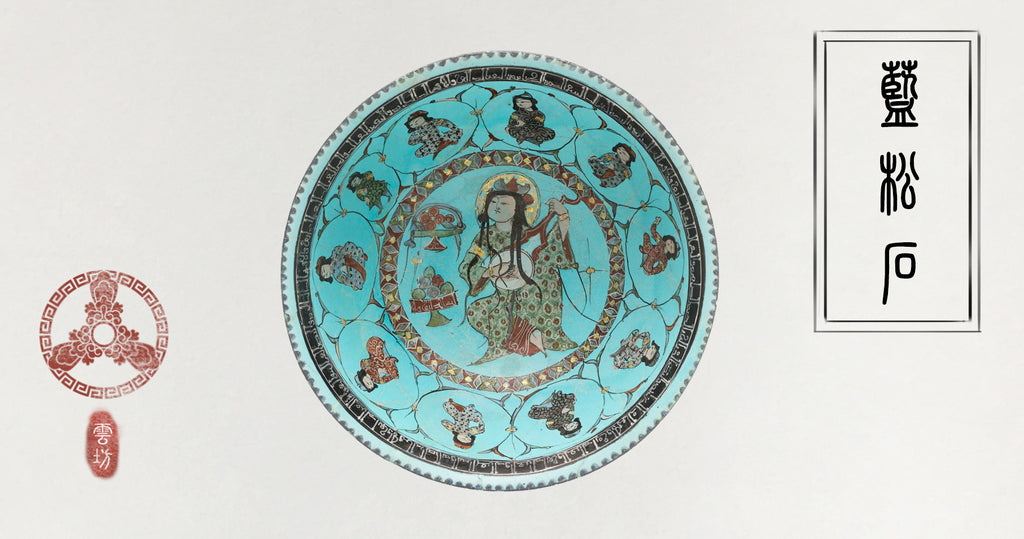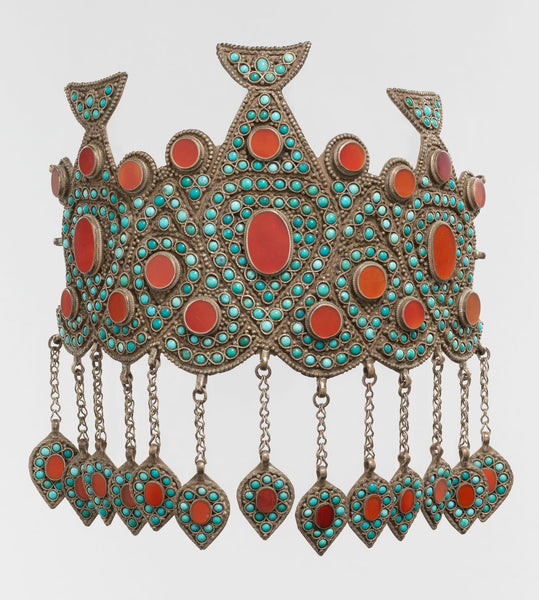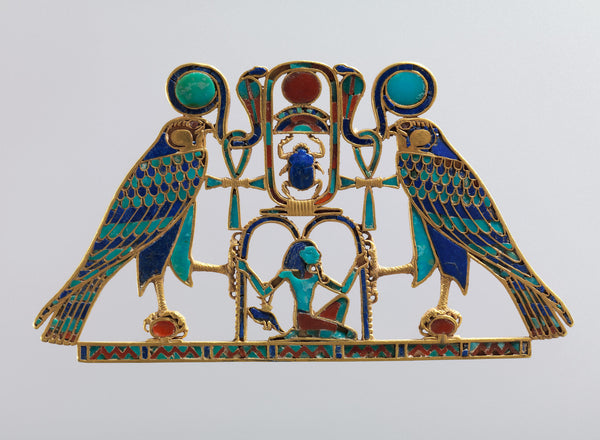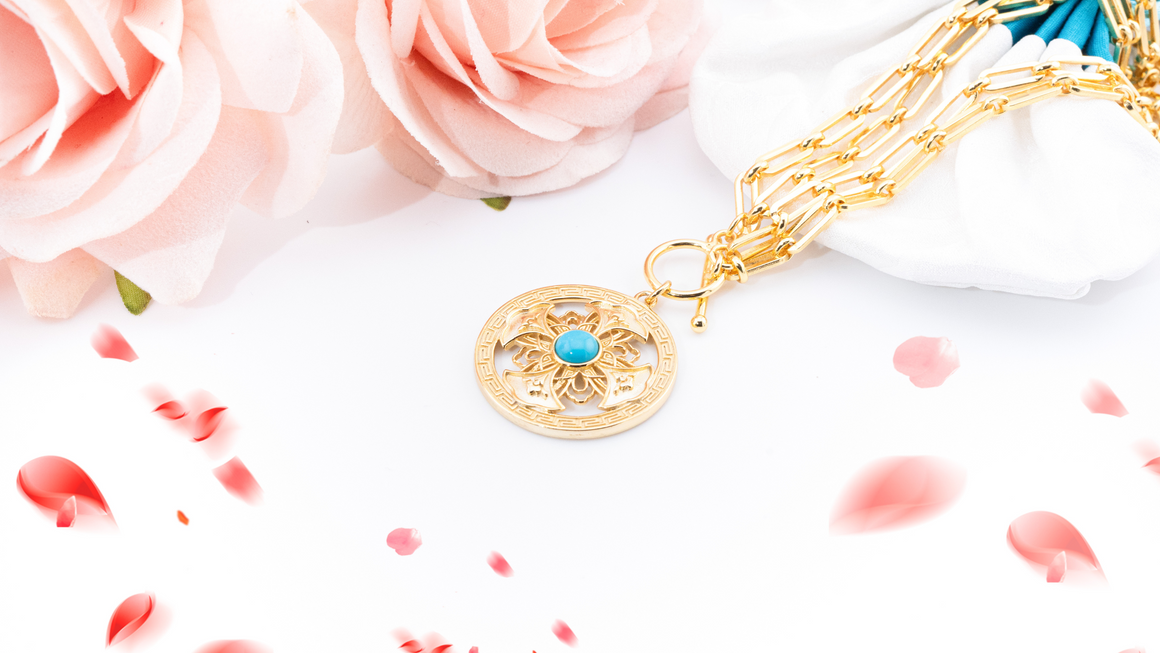Turquoise: Precious Treasure in Global Culture

The color of rivers flowing in central Asia, genuine turquoise is both rare and stunning. Turquoise is one of the oldest gemstones in the world. It was treated as precious treasure in ancient times, and to this day remains a popular amulet believed to have divine energy.
Turquoise in Tibetan Culture
Turquoise was used on the crown of the first Tibetan king, it was used as a tribute to pay respect to the gods, and it was also used as a gift from Tibetan Kings to high level Lamas. Turquoise beads are also an important feature of Tibetan prayer beads.
Tibetan people believe that turquoise ornaments can bring protection to travelers and warriors. They wear necklaces with a special turquoise stone which they believe connects to their soul. It is said that the Tibetan king forbade his citizens from throwing any turquoise stone into the river, as it may separate the soul from the body, putting that person’s life at risk. In Southern Tibet, women wear turquoise in their hair to promote the long life of their husbands. Thus not wearing turquoise is considered offensive to one’s husband.

Turquoise in Global Cultures
In Iranian architecture, turquoise was used to cover the domes of exquisite palaces, in particular because its intense blue colour was considered to be a symbol of heaven on earth.
Indian people consider turquoise to be a stone of heaven because of its similarity to the blue sky. Sky is where the air comes from, so Indians believe that turquoise has a healing effect on the lungs and on the respiratory system, as well as being good for the eyes.

Because turquoise has been exported to European countries through Turkey, which is the start and finish of the Silk Road, so it received another nickname - Turkey Stone.
In its finer grades turquoise is rare and valuable, and for thousands of years it has been prized as a gem and as an ornamental stone. Turquoise was among the first gems to be mined, and while many historic sites have been depleted, some are still working to this day.
Imitation and Treatment
The Egyptians were the first to produce an artificial imitation of turquoise, in the glazed earthenware product known as faience.

The most common imitation of turquoise encountered today is dyed howlite and magnesite, both white in their natural states, with the former also having natural (and convincing) black veining similar to that of turquoise.
Turquoise can be treated to enhance both its colour and durability. As is so often the case with precious stones, full disclosure about treatment is frequently not given. It is therefore left to gemologists to detect these treatments in suspect stones using a variety of testing methods—some of which are necessarily destructive. For example, the use of a heated probe applied to an inconspicuous spot will certainly reveal oil, wax, or plastic treatment.
This article is part of the Divine Land Gemstone Compendium, a weekly series by Yun Boutique exploring the gemstones of ancient China and their significance to Chinese culture. See the full series here. Subscribe to the email newsletter to receive future installments.
Edited by James Poulter. Researched by Ariel Tian.
Also in Divine Land Gemstone Compendium
Tridacna Shell: The Giant of the Sea

The tridacna gigas is the largest species of clam on the planet, and one of the seven treasures of Buddhism. Dive into the mystique of the sea with Yun Boutique's Tridacna Shell jewelry, showcased in our Divine Land Gemstone Compendium. Explore the captivating story behind these handcrafted pieces, each reflecting the grandeur of the ocean's giant.
The Kingfisher Feather Jewelry of Ancient China

Experience the allure of ancient China through Yun Boutique's exquisite Kingfisher Feather Jewelry, featured in our Divine Land Gemstone Compendium. Discover the captivating history and cultural significance of these meticulously handcrafted pieces that embody traditional elegance.
Turquoise: Fossil from Pine Trees

As a stone used by legendary goddess Nuwa for repairing the pillar of heaven, turquoise has never lacked a connection with immortals.
Researched by Ariel Tian.


